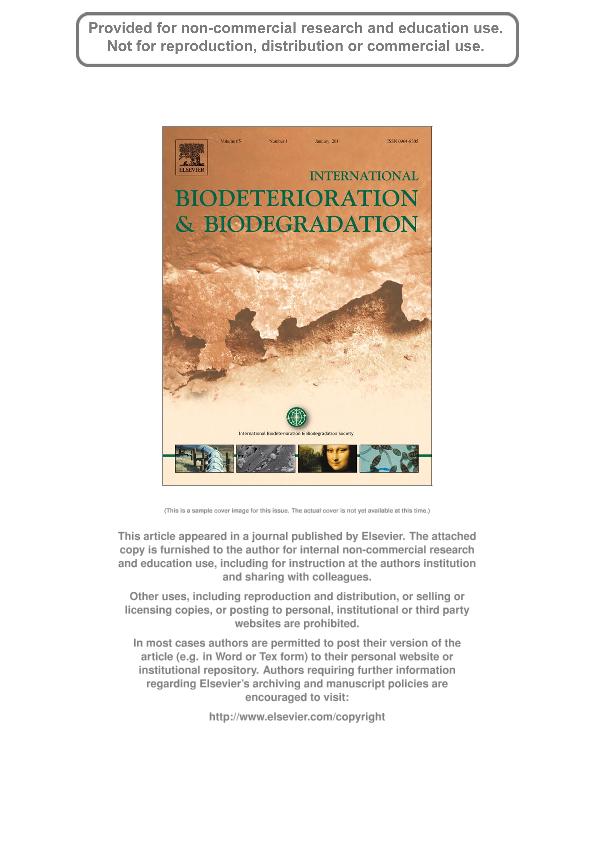Artículo
Indigenous microorganisms as potential bioremediators for environments contaminated with heavy metals
Fecha de publicación:
04/2012
Editorial:
Elsevier
Revista:
International Biodeterioration and Biodegradation
ISSN:
0964-8305
Idioma:
Inglés
Tipo de recurso:
Artículo publicado
Clasificación temática:
Resumen
Heavy metal pollution is one the most serious environmental problems facing our planet today, and immediate solutions are needed. Heavy metals such as copper (Cu) and chromium (Cr) play an important role as trace elements in biochemical reactions, but these metals are toxic at higher concentrations. In our region, mining and industrial activities have led to large-scale copper contamination in the environment. All organisms have homeostasis mechanisms for this metal, but when these controls fail or are exceeded several toxicological processes can develop.Problems involving Cr contamination are related to the fact that Argentina is an important world producer of leather. A chromium compound is used as a tanning agent, which has resulted in severe contamination near tanneries, with a mix of Cr(III) and Cr(VI). At present, the conventional technologies used to remove heavy metals from the environment involve physicochemical processes, which are costly and require large amounts of energy and specialized equipment. However, microbe-based removal is now considered to be an effective alternative method to the conventional processes and is receiving greater levels of interest for potential uses in bioremediation.This review discusses the toxic effects of Cu and Cr on the environment and on human health, as well as possible approaches for bioremediation of these metals using native microbes from our region.
Archivos asociados
Licencia
Identificadores
Colecciones
Articulos(PROIMI)
Articulos de PLANTA PILOTO DE PROC.IND.MICROBIOLOGICOS (I)
Articulos de PLANTA PILOTO DE PROC.IND.MICROBIOLOGICOS (I)
Citación
Colin, Veronica Leticia; Villegas, Liliana Beatriz; Abate, Carlos Mauricio; Indigenous microorganisms as potential bioremediators for environments contaminated with heavy metals; Elsevier; International Biodeterioration and Biodegradation; 69; 4-2012; 28-37
Compartir
Altmétricas




